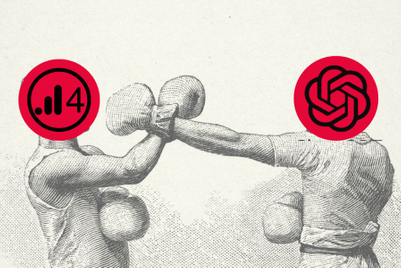
Marketers spend billions of dollars on brand-building to win over the hearts and minds of consumers. But once those consumers hit the store, there’s a disconnect.
“Marketers are spending all this money on brand messaging along the entire consumer experience journey from discovery," said Julian Corbett, chief executive officer and founder of Ksubaka. "You build up all this brand equity, but when customers walk into the store they see ‘buy one, get one free’.”
Brand messages are not being delivered at the point where consumers have the will and intent to purchase, he added during a phone conversation with Campaign Asia-Pacific.
Corbett and the team at Singapore-based Ksubaka (formerly PlayTMN), are on a mission to change the way in-store advertising is delivered to shoppers with the company's playSpots platform.
An offline-to-online solution that comprises remotely managed touchscreen displays strategically placed around retail stores, the platform is garnering intriguing results.
The team recently announced that it has hit a new milestone—recording over 1 million engagements per month—18 months into its trial phase in two markets. In Singapore, the network spans 200 screens in Guardian stores, with another 100 screens in FairPrice supermarkets. In Beijing, the network launched four months ago, with playSpots present in 80 stores owned by Wunart, a leading Chinese retail company. That translates to 15 per cent of hypermarkets present in the city.
The platform is currently hosting 14 campaigns, including major brands such as Coca-Cola, Kellogg’s and Nescafe.
Other brands that have participated in the trial include Clear, Colgate, Dove, Head & Shoulders, Heineken, Lifebuoy, Oreos, Sunsilk and Wall’s Ice-Cream.
Meaning of MoJos
Brands have long struggled to engage with consumers at scale at the point of purchase, a problem Ksubaka believes the platform it is building will soon solve.
The company said its solution “goes beyond” simple consumer engagement, delivering what it calls “Moments of Joy” or 'MoJos', as its definition of engagement.
This means short, familiar and bite-sized interactive apps leveraging the language of games, which take place a few feet away from the store shelf, right when consumers are ready, willing and able to make purchasing decisions.
Shoppers are also offered the option of extending the experience to mobile, where they can redeem rewards, collect loyalty points or link to the brand social networks.
MoJos are built around the reasons to believe in the advertised product, making it the hero and bringing consumers into the heart of the brand story.
Measuring MoJos
| Julian Corbett |
Corbett said that delivering a permission-based, fun, interactive and immersive experience enables brands, for the first time, to gather from in-store locations the equivalent real-time metrics they enjoy online and benefit from significant increased sales.
He shared some of the insights and statistics that the platform has garnered during its trial phase:
- Each playSpot is used on average every five to 10 minutes.
- A hypermarket with 10 Ksubaka playSpots will engage 10 per cent to 15 per cent of footfall.
- On average a store with Ksubaka playSpots generates over 100,000 MoJos a year.
- The platform will see between 40,000 to 65,000 players in any 12-hour period.
- Recent campaigns have seen 12 per cent of those who complete a Ksubaka experience connect via their mobile on WeChat, with a further 22 per cent sharing the event on their timelines.
Corbett claimed that the platform’s ability to garner 40,000 to 65,000 players in any 12-hour period exceeds the lifetime number of downloads of 99.9 per cent of all apps in 2014.
This is helped by the platform’s flexibility and real-time analytics, allowing campaigns to be redirected or featured more frequently on playSpots registering higher levels of activity at any time.
“There’s this prevailing notion among marketers that ‘everyone has a mobile, so why not just create an app?’, but fact is that less than 1 per cent of Android apps have more than 50,000 users," he said. "The cost of acquiring users has gone up greatly."
According to findings from mobile marketing technology company Fiksu’s Cost Per Loyal User Index, the cost of acquiring users for games and apps is up 113 per cent from last year, putting the number at US$3.09.
The cost per Install (CPI), which is the cost per app install directly attributed to advertising, was reported to be at US$1.43 for iOS and US$2.73 for Android in July 2015.
Ksubaka is also touting an 8 per cent CTR, which exceeds the typical CTR rate for web display advertising, which is around 0.05 per cent.
A digital media planner Campaign Asia-Pacific spoke to noted that 0.05 per cent is on the low end and applies to absolutely generic ad blasts, the lowest common denominator.
“Targeted, contextual advertising, when done on web display, gets on the high-end CTR levels between 1 and 2 per cent, speaking from the results we’ve gotten from campaigns we’ve run for clients,” he said. “Facebook and Google CTR levels can reach beyond 5 per cent, and they routinely do, but you can't really call that display advertising."
Corbett admitted the comparison of web display CTR to playSpots’ CTR rates is not a perfect “apples to apples” comparison, but added that he is open to suggestions from the industry for a better comparative metric.
Corbett also reported a higher willingness from players to complete additional tasks, such as answering survey questions, sharing contact details or further engaging via mobile, after finishing a game.
“Games are meant to be fun and players are more open to completing additional requests because they’ve had that good initial experience," he said. "Traditional advertising requires consumers to do something before they can get to content but our approach is reversed and results in higher willingness to participate."
Corbett also highlighted a recent campaign the company executed for P&G in China, to further demonstrate the platform’s effectiveness (see video for more).
Making MoJos
“Our game development platform already has 25 game formats that can be customised for any campaign," he said. "And we believe our development cost is competitive, at about US$10,000 on average if done internally.”
The company already has arrangements with 15 different game studios and also offers a software development kit (SDK) for third-party developers to build for the platform, which leverages the Unity 3D game engine.
In addition, brands only pay for completed MoJos, which is defined as completed engagements with a user touching the screen and playing on until the rewards screen comes up—with no charges for brand exposure.
Corbett shared that the cost per MoJo is typically 2 RMB (US$0.31) for 65 seconds of consumer time all the way to the reward screen, noting that this is comparable to the average cost per click (CPC), which can range from US$0.08 to US$4 depending on platform and desired reach.
Asked about the low pricing the company is offering, Corbett said that as the new media player in town, the company has “to be five times better that what’s already out there.”
“Offering a competitive price and showing consistent proof points is what we’ve been working on for the past 18 months," he said. "No brand would be willing to bet on this platform if we can’t show that we’re sustainable and can deliver that return on investment."
Spreading MoJos

Corbett said that for Ksubaka to successfully navigate beyond innovation budgets to being a fixture in any brand campaign, the company needs to deliver the reach for brands in markets where they have the budget to invest and resources to support.
The company also needs to deliver scalability and level of density to ensure that they can reach 30 to 50 per cent of their audience more than once a month.
The goal now for the company is to move to the next phase of its growth cycle, with plans to begin a Series B fundraising round later this year.
The company closed its Series A funding round in January of this year from private investors and Dymon Capital Asia. The US$5 million investment is earmarked for further development and validation of the platform.
Corbett could not give a specific number in terms of the amount the team intends to raise, as it has yet to start the process, but hoped it will be a “solid B round” in the range of double-digit millions.
This new round of funding will be channelled toward expanding the network of playSpots and beefing up the management team.
“The goal is to hit 100 million MoJos a month, which is a mathematical certainty, especially if we reach 30,000 playSpots installations,” said Corbett.
The initial focus would be increasing coverage in China, which will be achieved through expanding on existing partnerships and signing up with more retailers to gain access to the thousands of retail stores in the market.
Outside of China, the company will look toward deploying in key growth territories, with markets such as Jakarta being possibilities.
“We will be beginning our inception of three other markets this year, but the focus is very much on China for the initial expansion phase,” he added.





.jpg&h=334&w=500&q=100&v=20250320&c=1)
.jpg&h=334&w=500&q=100&v=20250320&c=1)
.jpg&h=334&w=500&q=100&v=20250320&c=1)
.jpg&h=334&w=500&q=100&v=20250320&c=1)
.jpg&h=334&w=500&q=100&v=20250320&c=1)





.jpg&h=268&w=401&q=100&v=20250320&c=1)

.jpg&h=268&w=401&q=100&v=20250320&c=1)

.jpg&h=268&w=401&q=100&v=20250320&c=1)
.jpg&h=268&w=401&q=100&v=20250320&c=1)